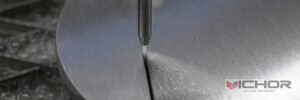
Stainless Steel Water Jet Cutting Services: Precision and Durability for Modern Projects
In today’s competitive manufacturing and fabrication landscape, precision and efficiency are paramount. Stainless steel water jet cutting services offer a versatile solution for industries requiring high-quality cuts without compromising material integrity. This advanced cutting method utilizes a high-pressure stream of water, often mixed with abrasive materials, to slice through stainless steel with exceptional accuracy. Unlike thermal cutting processes, water jet cutting does not generate heat, preventing warping, hardening, or alterations to the metal’s properties. As a result, it has become a preferred choice for applications demanding tight tolerances and clean edges. In this article, we will delve into the key aspects of stainless steel water jet cutting services, highlighting their benefits, applications, and considerations for selecting the right service provider. By understanding these facets, you can make informed decisions for your projects, ensuring optimal outcomes and cost-effectiveness.
Understanding the Basics of Water Jet Cutting Technology
Water jet cutting is a cold-cutting process that employs a high-velocity stream of water, typically pressurized up to 60,000 psi or more, to erode materials. For tougher substances like stainless steel, abrasive particles such as garnet are added to the water stream, enhancing its cutting capability. This method is computer-controlled, allowing for intricate designs and complex shapes with tolerances as tight as ±0.005 inches. The absence of heat-affected zones (HAZ) is a significant advantage, as it preserves the stainless steel’s corrosion resistance, structural integrity, and aesthetic appeal. Stainless steel water jet cutting services are ideal for projects requiring minimal post-processing, as the cuts are clean and burr-free. This technology is environmentally friendly too, as it produces no hazardous fumes or waste, aligning with sustainable manufacturing practices. By leveraging this process, businesses can achieve precise cuts on various stainless steel grades, from 304 and 316 to more exotic alloys, without the risk of thermal distortion.
Advantages of Using Water Jet Cutting for Stainless Steel
The benefits of stainless steel water jet cutting services are numerous, making them a top choice for many industries. Firstly, the cold-cutting nature eliminates heat-related issues, such as micro-cracking or changes in material properties, which are common in laser or plasma cutting. This is crucial for stainless steel, known for its durability and resistance to corrosion. Secondly, water jet cutting offers unparalleled versatility; it can handle a wide range of thicknesses, from thin sheets to plates over 6 inches thick, without sacrificing precision. Additionally, this method allows for omni-directional cutting, meaning it can start from any point on the material, reducing waste and optimizing material usage. The process is also safe for hazardous environments, as it doesn’t generate sparks or static electricity. By opting for stainless steel water jet cutting services, companies can reduce production time and costs associated with secondary finishing, thanks to the high-quality edges produced. Overall, these advantages contribute to improved efficiency and superior product quality in various applications.
Applications Across Diverse Industries
Stainless steel water jet cutting services are utilized across a broad spectrum of industries due to their adaptability and precision. In the aerospace sector, for instance, they are used to fabricate components like engine parts and structural elements, where tight tolerances and material integrity are critical. The automotive industry relies on these services for producing custom brackets, exhaust systems, and decorative trim, benefiting from the ability to cut complex shapes without heat damage. In architecture and construction, water jet cutting enables the creation of intricate designs for facades, railings, and signage, enhancing aesthetic appeal while maintaining structural strength. The medical field also benefits, as it allows for the precise manufacturing of surgical instruments and implant components, ensuring compliance with strict hygiene standards. Furthermore, the food processing industry uses stainless steel water jet cutting services for equipment parts that require smooth, contamination-free surfaces. This wide-ranging applicability underscores the method’s reliability and efficiency in meeting diverse project requirements.
Key Considerations When Choosing a Service Provider
Selecting the right provider for stainless steel water jet cutting services involves several factors to ensure quality and cost-effectiveness. One crucial aspect is the provider’s experience and expertise with stainless steel materials, as different grades may require specific handling. It’s essential to inquire about their

equipment capabilities, such as the maximum pressure and cutting bed size, to accommodate your project’s scale. Another consideration is the turnaround time; reputable services should offer flexible scheduling to meet deadlines without compromising precision. Quality control measures, like ISO certifications, can indicate a commitment to high standards. Additionally, discuss material waste management, as efficient nesting software can minimize scrap and reduce costs. When evaluating stainless steel water jet cutting services, also consider their customer support and ability to provide samples or prototypes. By assessing these elements, you can partner with a provider that delivers consistent results and supports your project’s success.
Comparing Water Jet Cutting to Other Methods
When evaluating cutting options, it’s helpful to compare stainless steel water jet cutting services with alternative methods like laser, plasma, or mechanical cutting. Water jet cutting stands out for its ability to handle thick materials without heat distortion, whereas laser cutting may struggle with thicker stainless steel and can introduce thermal stress. Plasma cutting, while faster for some applications, often results in a wider kerf and heat-affected zones, requiring additional finishing. Mechanical methods, such as sawing or milling, can cause mechanical stress and tool wear, leading to higher long-term costs. In contrast, stainless steel water jet cutting services provide a clean, cold-cut process that maintains the material’s properties and allows for intricate details. This method is also more environmentally friendly, as it doesn’t produce harmful emissions. By understanding these comparisons, businesses can make informed choices based on their specific needs, such as precision, material thickness, and budget constraints.
Environmental and Economic Benefits
The environmental and economic advantages of stainless steel water jet cutting services make them an attractive option for sustainable manufacturing. Environmentally, the process uses water and natural abrasives, which are recyclable and non-toxic, reducing the carbon footprint compared to methods that involve chemicals or generate fumes. The absence of heat means lower energy consumption in some cases, and the ability to nest parts closely minimizes material waste, contributing to resource efficiency. Economically, stainless steel water jet cutting services can lead to cost savings by reducing the need for secondary operations like deburring or heat treatment. The versatility of the process also allows for quick setup and changes between jobs, enhancing productivity and reducing downtime. Over time, these benefits translate into lower total cost of ownership and improved return on investment, making it a smart choice for businesses focused on long-term sustainability and profitability.
Future Trends in Water Jet Cutting for Stainless Steel
As technology evolves, stainless steel water jet cutting services are poised to become even more efficient and accessible. Innovations in pump technology are increasing pressure levels, enabling faster cutting speeds and improved accuracy for thicker materials. The integration of artificial intelligence and IoT (Internet of Things) is enhancing automation, allowing for real-time monitoring and predictive maintenance, which reduces downtime. Additionally, advancements in abrasive recovery systems are making the process more sustainable by reusing materials. The growing adoption of 5-axis water jet cutting is expanding capabilities for complex 3D geometries, opening new possibilities for industries like automotive and aerospace. By staying updated on these trends, users of stainless steel water jet cutting services can leverage cutting-edge solutions to stay competitive and meet evolving market demands.
In conclusion, stainless steel water jet cutting services offer a robust, precise, and environmentally friendly solution for a wide range of applications. By understanding the technology, advantages, and selection criteria, you can harness its full potential for your projects. As the industry continues to innovate, these services will likely play an even greater role in modern manufacturing and fabrication.
Frequently Asked Questions About Stainless Steel Water Jet Cutting Services
Q1: What types of stainless steel can be cut using water jet services?
A1: Stainless steel water jet cutting services can handle a variety of grades, including common ones like 304 and 316, as well as more specialized alloys such as duplex and martensitic stainless steels. The process is versatile enough to accommodate different thicknesses and properties without affecting the material’s integrity.
Q2: How accurate is water jet cutting for stainless steel projects?
A2: Water jet cutting is highly accurate, with tolerances typically within ±0.005 inches. This precision makes stainless steel water jet cutting services suitable for applications requiring intricate details and tight specifications, such as in the medical or aerospace industries.
Q3: What is the maximum thickness that water jet cutting can handle for stainless steel?
A3: Stainless steel water jet cutting services can typically cut thicknesses up to 6 inches or more, depending on the equipment and abrasive used. Thicker materials may require slower cutting speeds, but the process remains effective without compromising quality.
Q4: Are there any material limitations or drawbacks with water jet cutting?
A4: While stainless steel water jet cutting services are highly versatile, they may be slower than thermal methods for very thick materials. Additionally, the process uses water, which requires proper disposal or recycling of abrasive mixtures, but this is generally manageable with modern systems.
Q5: How do I prepare files for a water jet cutting service?
A5: For stainless steel water jet cutting services, you should provide vector-based files in formats like DXF or DWG, which include precise dimensions and cut paths. It’s also helpful to specify material type, thickness, and any tolerance requirements to ensure optimal results.
continue reading
Related Posts
- 1371 words6.9 min read
- 1449 words7.3 min read


